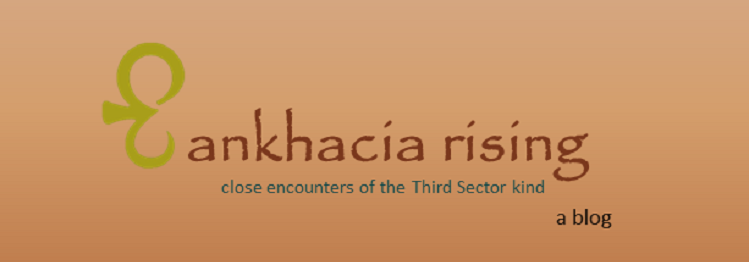To know thy donor’s capacity, give thy donor context
/I heard an account the other day of an executive director who reluctantly assumed the position after having filled in where needed in positions of increasing responsibility within the organization over a number of years. I marveled at how she was able to take on so much during that time, especially as a single mother with small children.
“When did you sleep?”, I asked, seriously doubting that she did.
She shared that because she was working at an agency that sheltered women and their children who are homeless, when she would sleep eventually worked itself out, as for a period of time she found herself spending the night alongside her clients when the night shelter manager eventually left the organization.
Now, obviously she saw her decision to do that as a necessity. In light of the fact that she had children of her own whom she had to leave with sitters, I’d call that sacrifice. Others may call it dedication. Regardless of how you look at it, she demonstrated a remarkable capacity of something, for sure. But it is not in mine or anyone else’s eyes as beholders to name. It is in hers to know.
Like any vessel, we are presumed to have our personal limits, topping-off point, level of capacity. But is that limit strict or fluid? Is it strict in the sense that we’ve put a predetermined cap on how much we will give of ourselves or fluid in the sense that we can comfortably expand or contract that vessel according to the situation?
When I first became a development professional, donor forecasting methods that utilized research tools to determine a prospects capacity to give based on profession, residential zip code, employer and the like were not only common, but best practice. These tactics were used, for the most part, to find people who were not already involved in the organization.
On the occasion that they were, these methods were employed to see how much more we could ask of them (usually financially) during the next campaign cycle.
To me it often seemed rather surgical and impersonal.
In my estimation, what was missing was context. Beyond the reasoning that needs increase each year, I often I didn’t know what the objective was in asking a current donor to increase their contribution this year, or in seeking new, wealthy donors. I wasn’t included in the conversations about the “why” of all this, so it left me feeling displaced and uneasy.
It seemed the thinking was that our mission and vision should be explanation enough. And I’m not saying it wasn’t, or in your case, it’s not. But perhaps you can contextualize the need for the donor prospect in a manner that facilitates conversations that help them “craft a relationship with your organization so they may determine, maximize and leverage their time, talent and treasure in a manner that is suitable and comfortable for them.”
For instance, just because one of your board members with a background in finance has always accepted the nomination to the finance committee doesn’t mean a nomination to the special events committee won’t be a good use of their talents.
Or just because your volunteer receptionist lost a parent to Alzheimer’s disease doesn’t mean they wouldn’t welcome the opportunity to spearhead a campaign to fund a memory garden. Or just because you heard that a longtime donor received a prestigious appointment with a new employer doesn’t mean a comparable increase in contribution is assured.
There are contexts for each of these scenarios, but you can only know them if you ask.
It could well be that your board member would welcome an opportunity to use skill sets they don’t use at work. It could well be that your volunteer receptionist would find fundraising for a memory garden the ideal activity to lift their spirits and commemorate their parent.
It could well be that the good fortune that came to your longtime donor could mean their contributions have to go to another organization in satisfying the new corporate politics this prestigious appointment fosters.
You shouldn’t assume what your donors want, need or can do any more than you want them doing that with you.
To ask your donors is to know your donors. And once you know your donors you can then illustrate for them how to live their love for humanity through your organizations by letting the what, why and how of what you do give context to how they engage with you, guiding them to challenge their own assumptions about what their limits are in expressing that philanthropy.
You need to create environments where they can see themselves as integral to the successful realization of your mission and vision, an essential part of how you demonstrate your beliefs about the work you do and the way you operate as an organization.
Philanthropic capacity is in the eye of the donor. But what you show them that can expand or contract that capacity is up to you.

